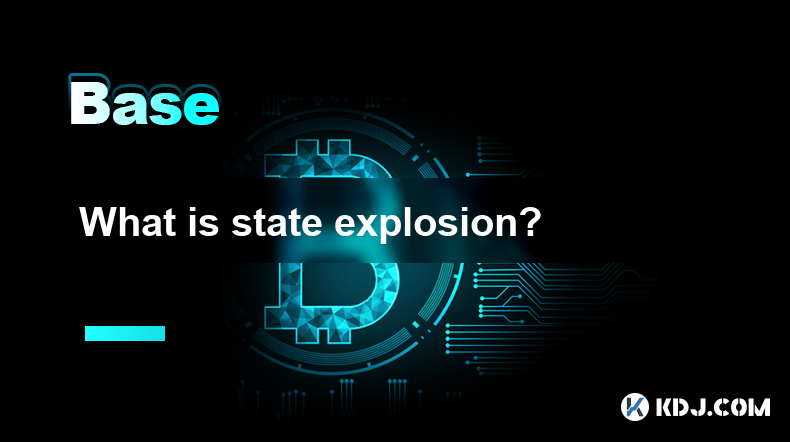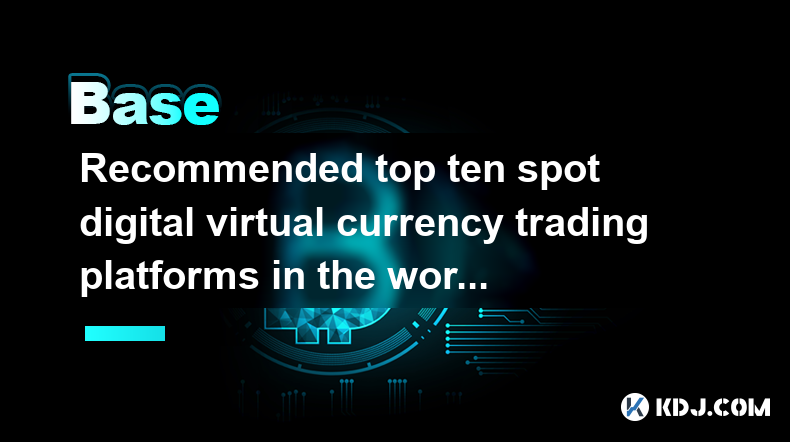-
 Bitcoin
Bitcoin $87,160.3686
2.59% -
 Ethereum
Ethereum $1,577.5291
-0.58% -
 Tether USDt
Tether USDt $1.0000
0.00% -
 XRP
XRP $2.0804
0.22% -
 BNB
BNB $596.3334
0.99% -
 Solana
Solana $136.5658
-0.15% -
 USDC
USDC $1.0000
0.00% -
 Dogecoin
Dogecoin $0.1584
1.77% -
 TRON
TRON $0.2458
-0.32% -
 Cardano
Cardano $0.6208
0.05% -
 Chainlink
Chainlink $13.1006
-1.96% -
 UNUS SED LEO
UNUS SED LEO $9.1412
-1.97% -
 Avalanche
Avalanche $19.9880
2.50% -
 Stellar
Stellar $0.2528
3.56% -
 Shiba Inu
Shiba Inu $0.0...01238
-0.19% -
 Toncoin
Toncoin $2.8930
-3.79% -
 Sui
Sui $2.2031
4.44% -
 Hedera
Hedera $0.1692
1.25% -
 Bitcoin Cash
Bitcoin Cash $343.2002
2.28% -
 Polkadot
Polkadot $3.8296
-1.99% -
 Hyperliquid
Hyperliquid $17.9378
1.39% -
 Litecoin
Litecoin $78.0777
0.75% -
 Dai
Dai $0.9999
0.00% -
 Bitget Token
Bitget Token $4.4322
0.90% -
 Ethena USDe
Ethena USDe $0.9993
0.00% -
 Pi
Pi $0.6347
-0.88% -
 Monero
Monero $214.7110
-0.08% -
 Uniswap
Uniswap $5.2643
-0.22% -
 Pepe
Pepe $0.0...07787
2.99% -
 Aptos
Aptos $4.9970
-0.84%
What is state explosion?
State explosion in cryptocurrencies, particularly impacting smart contracts, arises from exponentially growing system states, overwhelming computational resources and causing slow transactions, high gas fees, and potential system failures. Mitigation strategies include optimized state transition functions and efficient data structures.
Mar 25, 2025 at 03:28 am

Key Points:
- State explosion refers to the rapid growth in the number of possible states a system can be in, often overwhelming computational resources. In the context of cryptocurrencies, this primarily applies to consensus mechanisms and smart contracts.
- The complexity of smart contracts, particularly those with intricate logic or many interacting components, can lead to state explosion.
- State explosion can result in slow transaction processing, high gas fees, and even system failures.
- Various techniques are employed to mitigate state explosion, including optimized state transition functions, efficient data structures, and improved consensus algorithms.
What is State Explosion?
State explosion, in the context of cryptocurrencies, describes a phenomenon where the number of possible states within a system grows exponentially, exceeding the computational capacity to manage it efficiently. This is particularly relevant for blockchain technologies that rely on complex systems of interacting components. Imagine a simple smart contract; as the number of participants and their interactions increase, the potential states the contract can be in multiplies dramatically. This explosion in potential states quickly overwhelms the system's ability to track and manage them all.
State Explosion in Smart Contracts:
Smart contracts, self-executing contracts with the terms of the agreement directly written into code, are susceptible to state explosion. A complex smart contract, involving many participants and intricate logic, can quickly lead to a massive number of possible states. Each transaction or interaction modifies the contract's state, and the sheer volume of possible combinations makes it computationally expensive to track. This can lead to increased transaction processing times and higher gas fees.
How State Explosion Impacts Blockchains:
The impact of state explosion on blockchain performance is significant. Slow transaction processing times directly affect user experience and network scalability. High gas fees, the cost of executing transactions on a blockchain, become prohibitive, hindering adoption and usage. In extreme cases, state explosion can even lead to system failures or denial-of-service attacks, rendering the blockchain unusable. This highlights the critical need for efficient mechanisms to manage and mitigate the problem.
Mitigating State Explosion:
Several strategies are employed to combat state explosion and maintain blockchain efficiency. These strategies focus on optimizing the underlying mechanisms and data structures.
- Optimized State Transition Functions: Designing efficient state transition functions is crucial. These functions dictate how the system transitions from one state to another. By carefully designing these functions to minimize redundant computations and unnecessary state updates, we can significantly reduce the rate of state explosion.
- Efficient Data Structures: The choice of data structures used to represent and manage the system's state is critical. Using optimized data structures, such as Merkle trees or Patricia trees, allows for efficient storage and retrieval of state information, significantly reducing the computational overhead.
- Improved Consensus Mechanisms: The consensus mechanism, which determines how transactions are validated and added to the blockchain, also plays a role. More efficient consensus algorithms can reduce the computational burden associated with state tracking and validation. For example, advancements in Proof-of-Stake (PoS) mechanisms are designed to improve efficiency compared to older Proof-of-Work (PoW) systems.
- State Pruning and Archival Strategies: For blockchains with long histories, storing every single state transition can be inefficient. State pruning involves selectively removing older state data that is no longer needed, while archival strategies optimize the storage and retrieval of historical states.
- Formal Verification and Testing: Rigorous testing and formal verification techniques help identify potential sources of state explosion in smart contracts before deployment. This proactive approach can prevent costly and disruptive issues down the line.
State Explosion in Different Consensus Mechanisms:
Different consensus mechanisms exhibit varying degrees of susceptibility to state explosion. Proof-of-Work (PoW) systems, while robust, can face challenges with state explosion as the complexity of the blockchain increases. Proof-of-Stake (PoS) systems, generally more efficient, can still encounter state explosion problems if not carefully designed. Alternative consensus mechanisms, such as Delegated Proof-of-Stake (DPoS) or Practical Byzantine Fault Tolerance (PBFT), also require careful consideration to mitigate state explosion.
The Role of Gas Fees in State Explosion:
Gas fees act as a deterrent against excessive state growth. The cost of executing transactions on a blockchain, which depends on computational complexity, is directly related to state explosion. As the number of possible states increases, the cost of processing transactions rises, discouraging computationally intensive operations that contribute to the problem. This inherent pricing mechanism serves as a natural constraint on state explosion, but it is not a complete solution.
Frequently Asked Questions:
Q: Can state explosion completely halt a blockchain?
A: While not likely to completely halt a blockchain outright, extreme state explosion can lead to significant performance degradation, making the blockchain unusable in practice. Transactions might take excessively long, and gas fees could become prohibitively high.
Q: Are all smart contracts equally susceptible to state explosion?
A: No. Simple smart contracts with straightforward logic are less susceptible than complex contracts with many interacting components and intricate logic. The complexity of the contract's state transitions directly influences the risk of state explosion.
Q: How can developers prevent state explosion in their smart contracts?
A: Developers should focus on writing efficient code, using appropriate data structures, and thoroughly testing their contracts before deployment. Employing formal verification methods can also help detect potential issues early on.
Q: Is state explosion a problem unique to cryptocurrencies?
A: While particularly prominent in cryptocurrencies due to the decentralized and publicly verifiable nature of the systems, state explosion is a general problem in computer science, appearing in various complex systems beyond the cryptocurrency domain.
Q: What is the future of tackling state explosion in blockchain technology?
A: Ongoing research focuses on developing more efficient consensus mechanisms, data structures, and state management techniques. Improved programming languages and tools specifically designed for smart contract development are also crucial in mitigating this challenge.
Disclaimer:info@kdj.com
The information provided is not trading advice. kdj.com does not assume any responsibility for any investments made based on the information provided in this article. Cryptocurrencies are highly volatile and it is highly recommended that you invest with caution after thorough research!
If you believe that the content used on this website infringes your copyright, please contact us immediately (info@kdj.com) and we will delete it promptly.
- Lightchain AI: The Future of Cryptocurrency
- 2025-04-22 05:30:13
- Coinbase Expands XRP Futures Contracts Trading
- 2025-04-22 05:30:13
- Difficulty Spike and Hashrate Drop Lengthen Block Times
- 2025-04-22 05:25:13
- Despite the Harshest Profit Squeeze in Half a Decade, Bitcoin Mining on U.S. Soil is Consolidating and Gathering Momentum
- 2025-04-22 05:25:13
- Bitcoin (BTC) markets ticked higher
- 2025-04-22 05:20:13
- Shiba Inu (SHIB) and Lightchain AI (LCAI) Are Rapidly Gaining Ground, Positioning Themselves as Serious Competitors to Dogecoin.
- 2025-04-22 05:20:13
Related knowledge

What are the formal digital currency trading apps? What are the BTC exchange apps?
Apr 22,2025 at 03:28am
Regular BTC trading app 1. Binance Binance is a world-renowned digital currency trading platform, providing powerful APPs and excellent user experience. Its main features include: Rich trading pairs : Binance supports over 500 cryptocurrencies and thousands of trading pairs, and users can easily find the currency they want to trade. High security : Bina...

Recommended top ten spot digital virtual currency trading platforms in the world in 2025
Apr 21,2025 at 05:15pm
Recommended top ten spot digital virtual currency trading platforms in the world in 2025 1. Binance As the world's premier cryptocurrency trading platform, Binance is known for its extensive trading pairs and efficient trading services. Its features include: High Liquidity : Binance has huge trading volumes, ensuring users can trade at the best pric...

Ranking of top ten virtual currency trading apps in the currency circle (the latest authoritative list in 2025)
Apr 21,2025 at 10:28pm
The top ten virtual currency trading apps in the 2025 cryptocurrency circle are listed as follows: 1. Binance Binance is one of the world's leading cryptocurrency trading platforms, known for its efficient trading system and extensive currency support. Binance's user interface is designed with simplicity and is suitable for beginners and profess...

Introduction to the top ten digital currency trading app platforms in 2025
Apr 22,2025 at 03:49am
Introduction to the top ten digital currency trading app platforms in 2025 1. Binance Binance is one of the world's leading digital currency trading platforms, ranking first with its huge trading volume and extensive user base. Binance provides trading pairs of more than 500 cryptocurrencies, supporting a variety of trading methods such as spot trad...

The latest ranking of the top ten digital virtual currency trading platforms in 2025
Apr 22,2025 at 02:14am
The latest ranking of the top ten digital virtual currency trading platforms in 2025 1. Binance As the world's largest cryptocurrency trading platform, Binance has always maintained its leading position. The platform offers trading pairs in over 500 cryptocurrencies and supports multiple languages and payment methods. Its user-friendly interface i...

Which virtual currency app is better? Top ten cryptocurrency app trading platforms
Apr 22,2025 at 02:35am
Top 10 cryptocurrency trading application platforms recommended 1. Binance Binance is one of the world's leading cryptocurrency trading platforms, and is popular for its extensive currency support and efficient trading systems. Binance provides services including spot trading, futures trading, leveraged trading, etc., which meet the needs of differe...

What are the formal digital currency trading apps? What are the BTC exchange apps?
Apr 22,2025 at 03:28am
Regular BTC trading app 1. Binance Binance is a world-renowned digital currency trading platform, providing powerful APPs and excellent user experience. Its main features include: Rich trading pairs : Binance supports over 500 cryptocurrencies and thousands of trading pairs, and users can easily find the currency they want to trade. High security : Bina...

Recommended top ten spot digital virtual currency trading platforms in the world in 2025
Apr 21,2025 at 05:15pm
Recommended top ten spot digital virtual currency trading platforms in the world in 2025 1. Binance As the world's premier cryptocurrency trading platform, Binance is known for its extensive trading pairs and efficient trading services. Its features include: High Liquidity : Binance has huge trading volumes, ensuring users can trade at the best pric...

Ranking of top ten virtual currency trading apps in the currency circle (the latest authoritative list in 2025)
Apr 21,2025 at 10:28pm
The top ten virtual currency trading apps in the 2025 cryptocurrency circle are listed as follows: 1. Binance Binance is one of the world's leading cryptocurrency trading platforms, known for its efficient trading system and extensive currency support. Binance's user interface is designed with simplicity and is suitable for beginners and profess...

Introduction to the top ten digital currency trading app platforms in 2025
Apr 22,2025 at 03:49am
Introduction to the top ten digital currency trading app platforms in 2025 1. Binance Binance is one of the world's leading digital currency trading platforms, ranking first with its huge trading volume and extensive user base. Binance provides trading pairs of more than 500 cryptocurrencies, supporting a variety of trading methods such as spot trad...

The latest ranking of the top ten digital virtual currency trading platforms in 2025
Apr 22,2025 at 02:14am
The latest ranking of the top ten digital virtual currency trading platforms in 2025 1. Binance As the world's largest cryptocurrency trading platform, Binance has always maintained its leading position. The platform offers trading pairs in over 500 cryptocurrencies and supports multiple languages and payment methods. Its user-friendly interface i...

Which virtual currency app is better? Top ten cryptocurrency app trading platforms
Apr 22,2025 at 02:35am
Top 10 cryptocurrency trading application platforms recommended 1. Binance Binance is one of the world's leading cryptocurrency trading platforms, and is popular for its extensive currency support and efficient trading systems. Binance provides services including spot trading, futures trading, leveraged trading, etc., which meet the needs of differe...
See all articles






















































































